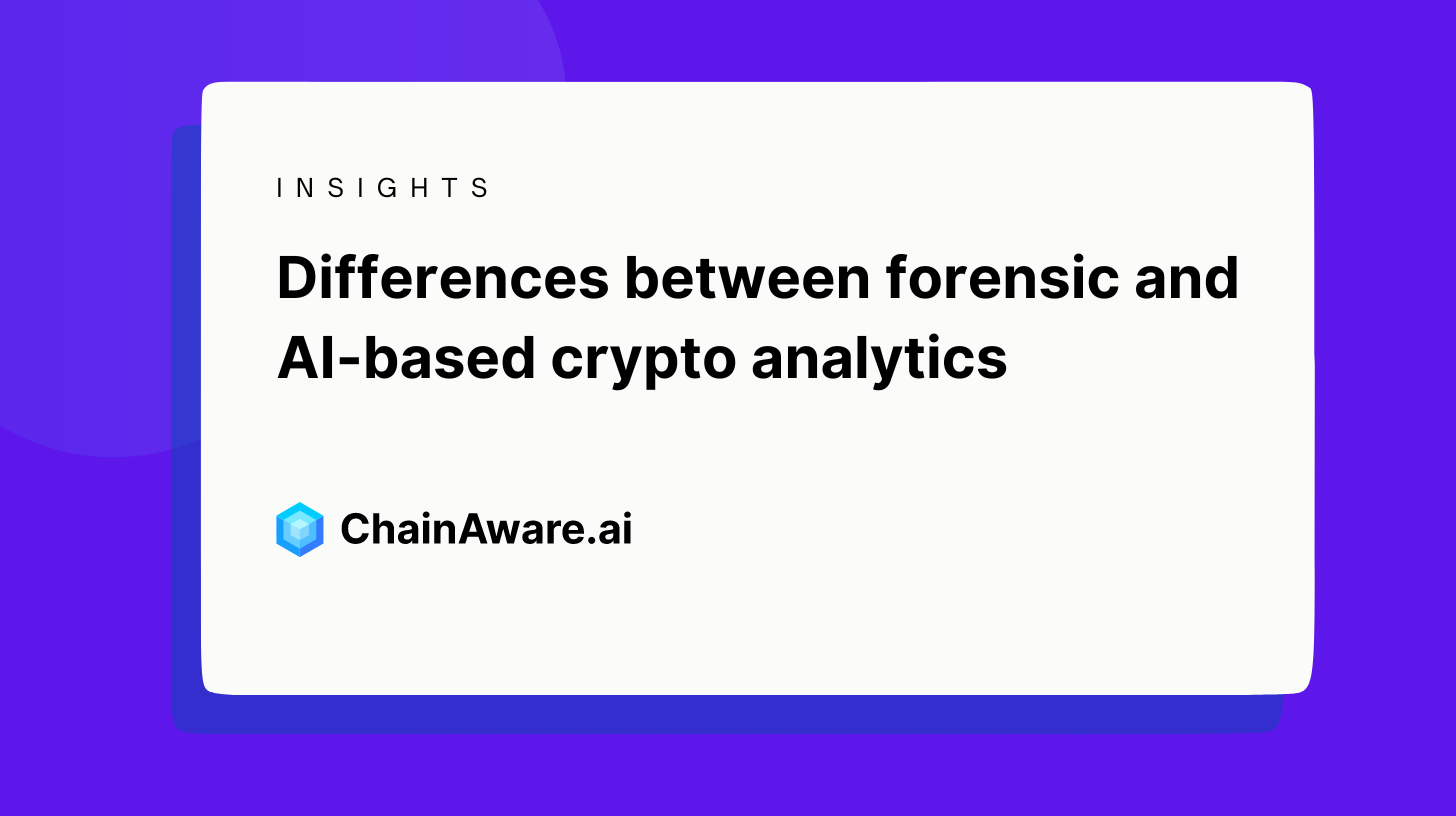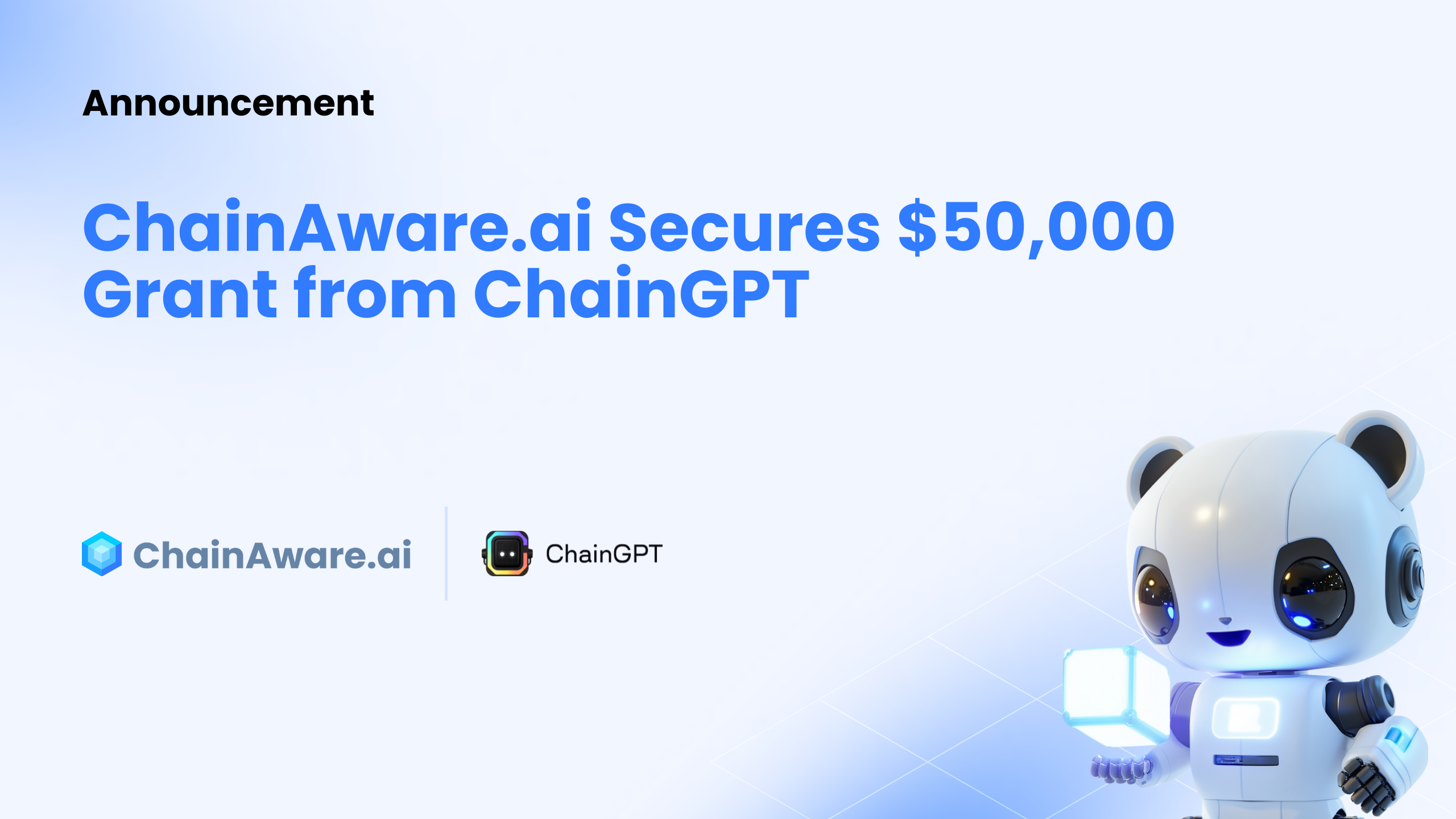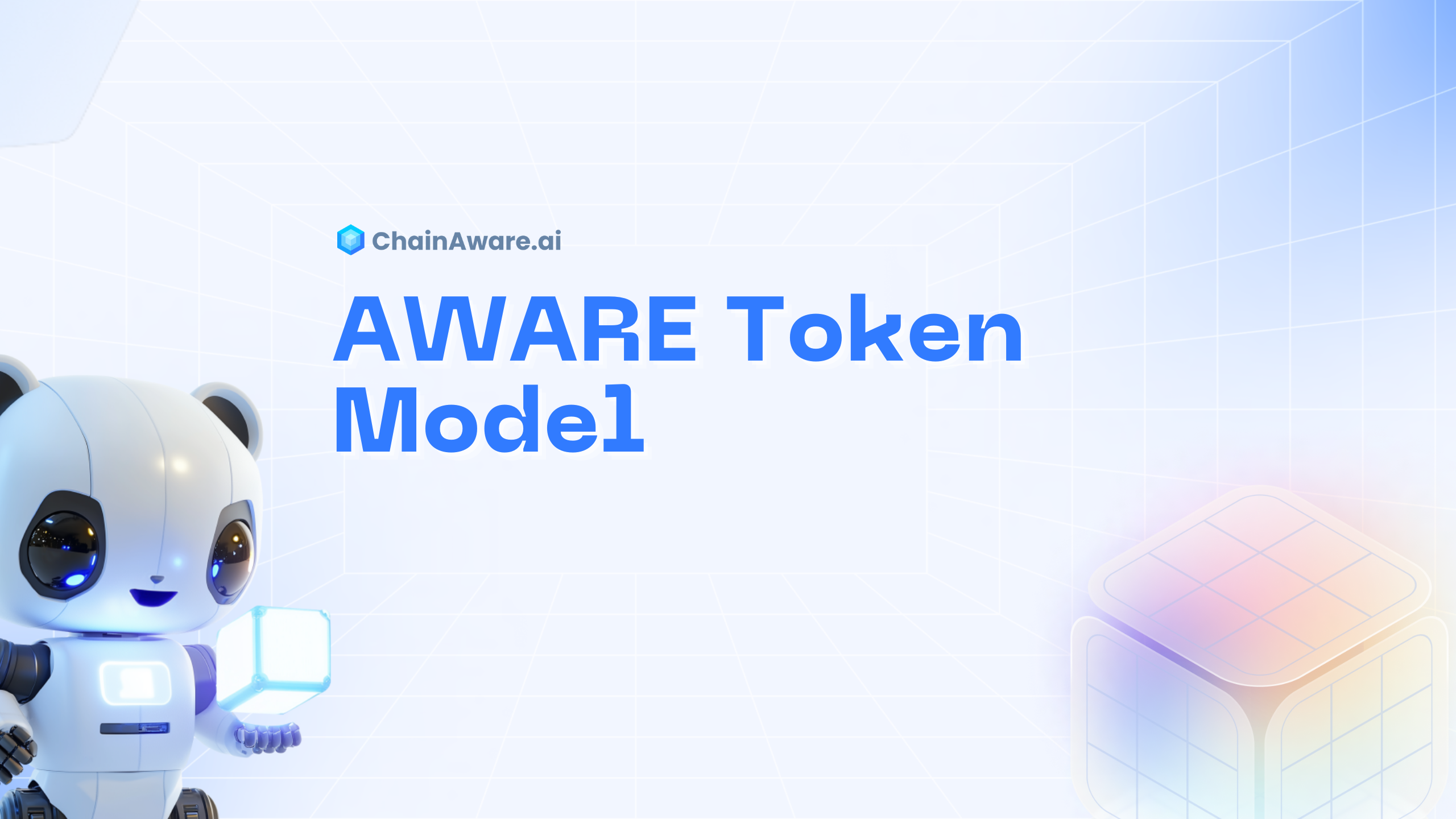Crypto Analytics is dominated by big players like Chainalysis or Coinfirm. Their business model is based on the following:
- Building Big Data Databases of blockchain addresses
- Tagging these addresses with all possible information, like an owner, etc.
- Analysis of the flows between these tagged addresses
Then the analysis is mainly done for the flows between the tagged addresses. For example, there are flows from Binance to OKex or from Binance to some unknown addresses. This allows them to generate some nice visualizations and track the flow of funds from addresses to other addresses.
But what are the business requirements for Virtual Asset Service Providers? These are determined by the regulators, and these are:
- KYC and KYB, i.e., Know Your Client and Know Your Business. Many tools are available, and we will not focus on them in this article.
- Crypto AML, i.e., verifying that the funds have been received from clean sources. If the funds are not from clean sources, then the funds should not be accepted or transferred.
- Crypto Transactions Monitoring, i.e., verifying the transactions before the execution and stopping the fraudulent transactions. For example, some of us might have received phone calls from credit card companies while on holiday in some other countries. This is an example of Transactions Monitoring in traditional finance.
Chainalysis, Coinform, and other Crypto Analytics companies position themselves as companies for AML and Transactions Monitoring. They are not using AI companies; therefore, we call them Forensic Crypto Analytics companies.
In parallel, new companies are emerging, focussing on AI-based Crypto Analytics. That’s precisely what we call them.
The focus of this article is to compare:
- Forensic Crypto Analytics and
- AI-based Crypto Analytics
Forensic Crypto Analytics
Forensic Crypto Analytics involves investigating and analyzing blockchain transactions to identify money laundering, fraud, or terrorism financing. Forensic crypto analytics aims to track the origins and destinations of cryptocurrency transactions and establish a clear link between these transactions and their owners.
Forensic Crypto Analytics is typically carried out by highly skilled investigators who deeply understand blockchain technology and the tools and techniques required to analyze it. These investigators use specialized software to track transactions and identify behavior patterns that may indicate criminal activity.
Forensic Crypto Analytics companies have built huge historical databases of the addresses, and they have tagged these addresses. Maintaining these tagged address databases is quite a lot of work, and that’s what the clients of Forensic Crypto Analytics companies have to pay for.
These tagged databases are then used for diverse analytics tasks, like:
- The flow of funds, this describes the flow of funds from one cluster of addresses to another cluster of the addresses
- AML refers to analyzing the sources of the funds; for example, addresses financed via Tornado transactions are not good. But addresses, which contain the salary payments, are good.
- Transactions Monitoring means identifying fraudulent transactions.
Transactions Monitoring looks at both receiver and sender addresses. It looks as well at their surrounding addresses. And follows then hard-coded rules for deciding whether these are good transactions or not.
But here are two issues with the Forensics Crypto Analytics:
- Tagging of the addresses – if the addresses are not tagged, then the Transactions Monitor has no information to identify the fraud or not fraud
- Fraud patterns – these are continuously evolving. It’s not enough to describe the fraud patterns with the rules-based system; they should be self-evolving.
AI-based Crypto Analytics
AI-based Crypto Analytics, on the other hand, uses advanced machine learning algorithms to analyze blockchain data in real time. This approach is designed to detect suspicious behavior patterns in the blockchain and flag them for further investigation. Because the blockchain evolves quickly, mapping and covering the entire blockchain space is challenging. But it might be easier to create self-learning AI-Models instead.
AI-based Crypto Analytics relies on sophisticated algorithms trained on vast amounts of historical data to identify patterns and trends that may indicate fraudulent activity. This approach is highly automated, which means that it can process large volumes of data quickly and accurately.
For example, https://chainaware.ai focuses on AI-based Crypto Fraud Detection and Crypto Transaction Monitoring. Instead of building and maintaining vast databases of tagged addresses, ChainAware.ai is building AI models that use specific addresses for training. One of the training areas is fraud addresses; this means the AI-Models are getting trained with the fraud address behaviors.
CeFi companies can then validate the addresses before sending transactions using AI-based APIs. If the receiver address doesn’t look good enough, it’s better not to trigger the transactions but to ask for additional clarifications.
DeFi companies can use the AI-based API to validate addresses when connecting to their DApps. If the addresses have too high a fraud probability, then it’s better not to connect them to the DApps.
Which one is better?
Forensic Crypto Analytics and AI-based Crypto Analytics have their strengths and weaknesses:
- Forensic Crypto Analytics is ideal for investigating specific transactions or entities and for building a case against potential criminals. It’s a highly specialized approach that requires a deep understanding of blockchain technology and significant time and resources.
- AI-based Crypto Analytics, on the other hand, is more suited to real-time monitoring of the blockchain. It’s a more automated approach that can process large volumes of data quickly and efficiently, making it ideal for identifying suspicious patterns of behavior and flagging them for further investigation.
Summary
This article examined the essence of Crypto Forensic Analytics versus AI-based Crypto Analytics. The regulatory requirements for Virtual Asset Service Providers are AML and Transaction Monitoring.
Forensic Crypto Analytics companies are perfect for the AML, especially with the huge databases of the tagged addresses, which allow identifying clean sources of the funds.
AI-based Crypto Analytics companies, on the other hand, are a better match for Transactions Monitoring, which requires identifying the fraud and not letting fraudulent transactions be executed. Transactions Monitoring in traditional finance is based on AI-driven models. We anticipate that the same will happen in the crypto industry, too – just because the creativity of fraudsters is unlimited, and it will be mission impossible to define all possible fraud identification rules.
Additional Info
- Crypto AML versus Crypto Transactions Monitoring
- Can AI be used for Crypto KYC, Crypto AML, and Crypto Transactions Monitoring?
- SmartCredit.io integrates AI-based Crypto Transactions Monitoring and Big Data Analytics
- ChainAware.ai launched predictive AI-based Crypto Fraud Detection
- Twitter: https://twitter.com/CryptoTrust_ai
- Twitter: https://twitter.com/smartcredit_io







